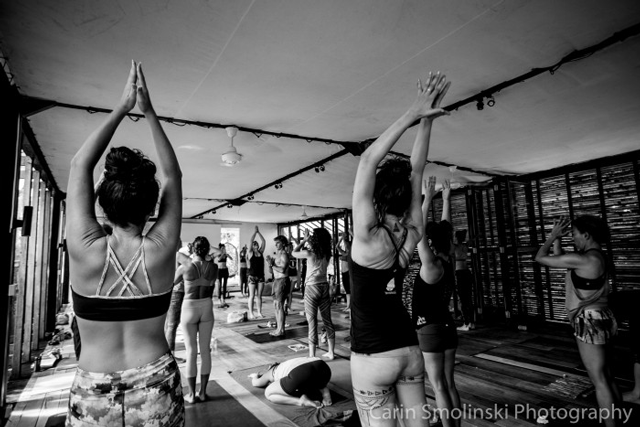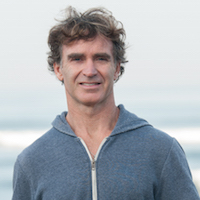
“My studio doesn’t want me to practice while I am teaching,” one of the graduates of our Blissology Yoga Teacher Training course tells me after my workshop in her town.
I’ve spent a lot of time over the past few years going to classes of our graduates with the intention of checking in and offering guidance.
I’ve heard this “not practicing while teaching” rule many times now and I’m amazed at its prevalence around the globe. I’ve frequently encountered students in our teacher training programs who have come from other yoga schools where they were told not to do the poses at all while teaching, but instead to stand or walk around the class while addressing the room.
During a recent conversation with a yoga studio owner close to where I live she said, “I have a policy for teachers not to practice while teaching because they are there to serve the students and they should do their own practice earlier, not in class time.”
This is true—yoga teachers are there to serve the students. Nobody wants a teacher who just practices at the front of the room in their own little bubble. If an instructor can’t see the students, how can they offer poses that are suited to the needs of the students?
Being a yoga teacher involves two-way communication—the cueing and sequencing relies on the teacher seeing what is happening in their class and being in touch with the needs of the students.
While I can see why this is something studio owners fear, is there no middle ground? Why can’t teachers offer a mix of practicing and walking around? How did it become so dogmatic?
Here’s my approach to the subject and why I am clear on choosing to practice at least part of the yoga classes that I teach, and why I encourage those who study with me to do the same.
I know that I can teach yoga perfectly well without doing the poses. In fact, many of my yoga videos were recorded in a completely dark Costa Rican closet filled with mattresses and pillows so the voice doesn’t echo (a poor man’s recording studio).
In my early days of teaching I used to be part of the “only walk around and don’t practice while teaching” school, like one of my early mentors Bryan Kest. I too took to walking around the class leading students, yes, sometimes even in jeans (that’s a nod to you, Bryan).
Over time I changed my approach and now commonly practice with the class for five to 10-minute stretches at a time before walking around the yoga room.
Why?
The most obvious reason for practicing while teaching is to be warmed up enough to demonstrate a pose when the time comes. Demonstrating is a powerful way for students to learn and teachers need be warmed up for it.
But there is more to it than this. I am talking about heightened embodiment and somatic awareness. When I practice in the class I move more into the world of sensation and can speak from this place. It increases my receptivity to the students’ experience—it becomes an energetic exchange.
When I actually do a yoga pose, the sensations are immediate and I can bring my cueing to life that much more. My language forms in the present moment and is not the same as cues repeated on autopilot—I feel and share fresh discoveries; there is a spontaneous poetry that comes through my words.
It also means my timing is better and I rarely keep people too long on one side compared to the other or hold the poses for too long. Imagine a chef who never tasted the dishes they are cooking; how does a chef know if he has over or under salted a dish if he doesn’t try it?
I will walk around the class, adjusting and correcting people, but the love of my yoga practice comes out more when I actually do the practice and get into my joy body. My joy and passion for yoga come through in my delivery.
Ultimately, I believe yoga asana should be a feeling and not a form. What hurts people in yoga is not the teacher who’s practicing with the class or walking around, it’s mostly students’ unawareness of their bodily feedback.
If the teacher can teach an embodied experience that creates the sensation of lightness, release and calm, the goal rather than the end pose, the risk of injury goes way down.
My favorite student was actually a blind teenager. We had to put lines of braille on his mat so he would stay oriented on it. His yoga experience was completely about creating a feeling of peace and energy flow, and he could not compare himself to others. I didn’t need to police him in order for him to back off. Watching him was pure poetry in motion even though he didn’t go that deep in the poses.
If teachers need to do some of the practice to have better access to students being more embodied and less forceful, I say, let them.
~
Excerpt modified from the Blissology Yoga Teacher training manual.
~
Author: Eoin Finn
Image: Carin Smolinski/Instagram
Editor: Katarina Tavčar


 Share on bsky
Share on bsky




Read 1 comment and reply